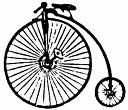We hosted Christmas this year, for a change. Surveying the wreckage, I thought I'd review where we did well, and what was less of a success:
The good:
-The Christmas cake I made – Delia's light Christmas cake – worked out quite well, and will go into packed lunches and serve us for teas for some time to come. I now have various leftover ingredients, such as crystallised ginger, which will need a home, although the angelica ended up, most appropriately, on the top of my sister's lovely Boxing Day trifle.
-The trifle – my sister and I took responsibility for this, but she actually made it. We went for a retro one, with frozen raspberries, tinned peaches and madeira cake on the base, and the aforementioned angelica, flaked almonds and multicoloured glace cherries as decoration.
-The goose – my husband cooked the goose, which we ordered from a nearby farm shop. It was not cheap, but, with its stuffiing of mashed potatoes, (Nigella, Feast) made a great Christmas lunch and yielded plenty of leftovers.
-Wrapping paper – I finally bought brown paper and wrapped many presents with that, prettied up slightly with gold ribbon.
-The Christmas tree – topped up with some new lights and one or two extra decorations (Homebase, 49 p each), the artificial Christmas tree had its seventh year of use.
-Kedgeree followed by warmed mince pies and brandy butter turned out to be a highly satisfactory Boxing Day lunch.
-The presents: with my family, we tried a new system of exchanging stocking type presents - including plenty of chocolate- and each specifying one or two larger items we would like. I, at least, liked this arrangement.
The bad:
-My Christmas pudding, which burnt slightly and stuck to the bottom of the pudding basin, as I stupidly let it boil dry at one point.
-The mince pies: the bought ones were so good, and I so lazy, that I never got around to making any myself. (I'll probably use the mincemeat in an apple crumble instead.)
-The various defects in our home which become apparent when we have a few guests: taps that are a bit stiff, guest towels that are frayed or tatty.
-The frying pan, already nearing the end of its life, which did not survive the festivities.
The ugly:
-My artificial Christmas tree – see above...
How a Book Club Can Make You Happier
3 days ago



